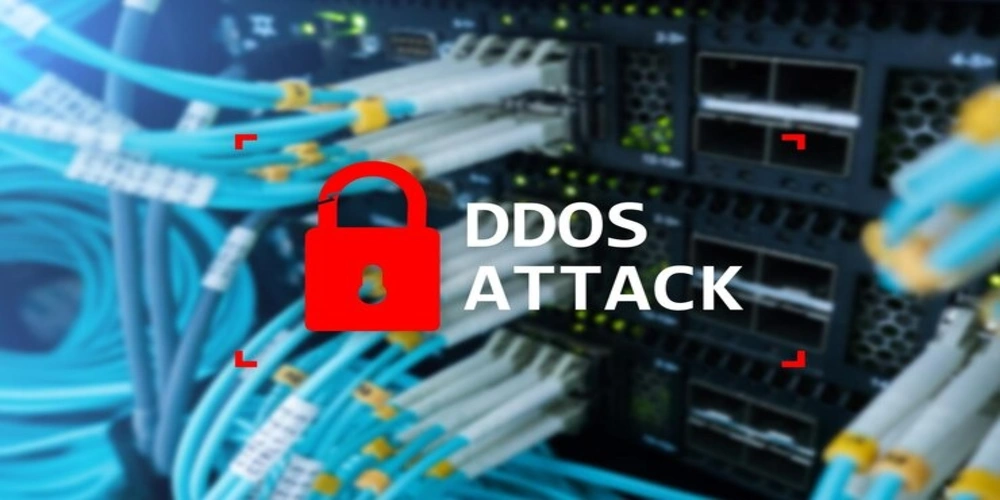Description
DDoS (Denial-of-Service attack) is a malicious activity that attempts to disrupt the normal operation, however, minimally, of a target server, service, or an intended qualified system by bombarding the target with an overwhelming amount of internet traffic. Differently from a standard denial-of-service attack, where a single source usually applies the menace upon a target, a distributed denial-of-service attack has multiple with/of compromised systems, referred to collectively as botnets, wielding menace toward an intended target.
DDoS attacks are formulated to block valid users from the application that is supposed to be targeted. This is usually accompanied by downtimes, loss of revenue, and tarnishing the good name of a company. DDoS attacks can happen for various reasons: political motives, extortion, or simply for the fun of it.
DDoS Engineering
DDoS Engineering is simple. It manipulates the power of a greatly spread out collection of compromised devices, usually called computers or sensors, and servers. Of course, the next step is for these devices to be infected with malware that can turn them on or off from the perpetrator's point of view. This is how attacks would normally occur, explaining the modus operandi to present a clearer understanding of the attack:
Botmaking: Attackers create a botnet by infecting many devices with malware. These devices are turned into zombies that are controlled from afar.
Command and Control: The attacker instructs the botnet to bombard the server with requests.
Traffic Flooding: The target server now becomes inundated with requests to the point that it cannot process anymore, producing increasingly slow responses or diminished service, or even possibly full cessation.
Denial of Service: Thus, as traffic is credited by illegitimate users that may not serve the traffic, causing denial of service during out times.
Different Types of DDoS Attack Services
DDoS attack services could be categorized under different classifications targeting the same type of service. Recognizing them may prepare companies for the worst.
1. Volume-Based Attacks
The volume of the attack above quickly ramps up the traffic directed toward such a target. Attacks under this category include UDP flood, ICMP flood, and DNS amplified attacks; this saturation would render the receiver incapable of accepting genuine traffic directed toward that server.
2. Protocol-Based Attacks
On the other hand, protocol attacks take advantage of their weakness in the network protocols. Examples include SYN flood, Ping of Death, and fragmented packet attacks, to name a few. Such attacks, in a way, tax the processing capacity of the server, thereby degrading the services.
3. Attacks on Application Layer
Application layer attacks are aimed at exhausting the resources of individual applications or services. Most need high traffic generation directed at a web application, for example, using HTTP flooding. This puts a load on the application, which in turn causes slowness or crashes upon reaching its thresholds.
Another 4 are multi-vector attacks.
These, too, make sense. Since a combination of methods is in play, thus, some volume-based attack is coupled with the application-based attack. These create double the trouble! The attack combination itself becomes a very modified type, which proves harder for organizations to fend off.
Impact of DDoS Attacks
DDoS attacks have negative consequences for firms. Its impacts include, among others:
Down Time: Extended outages mean major losses for a company dealing with online transactions like e-commerce.
Reputational Damage: Frequent, irregular downtimes develop such a perception as will be antagonistic to the corporate image of the firm, losing the trust and loyalty of the clientele.
Cost: Organization costs will be piling up in counter-DDoS tactics, including hiring experts to deal with cybersecurity or subscribing to DDoS protection.
Legal Issues: On a few occasions, two things stemmed from DDoS attacks: either damages for not securing customer data during the attack or fines for something not in place regarding their continuity program.
Protection Against DDoS Attacks
DDoS attacks are some of the most unimaginable and perturbing inconveniences ever to be experienced by any organization. Therefore, necessary measures should be in place against such attacks. Some obvious ones are:
1. Get DDoS Attack Services
There are many DDoS attack services sold by cybersecurity enterprises that detect and mitigate attacks. These services filter all bad traffic before it can reach your servers, allowing legitimate users to access your services without hindrance.
2. For Content Delivery Network (CDN)
A CDN can act to distribute traffic over multiple servers to lessen the effect of DDoS attacks. By caching what it receives to serve from many different locations, a CDN would absorb unnecessary amounts of traffic and maintain online availability.
3. Rate Limiting
On what game is it rated as big and bad? Rate limiting allows for rules and restrictions to be placed on users attempting to send requests to a server within a set amount of time. It should help in the act of limiting whatever amount of traffic that can filter through during an ongoing attack.
4. Traffic Pattern Monitoring
Systematic monitoring of network traffic earns the organization an edge in knowing the periods of unusual patterns signaling impending DDoS attacks, which allows a timely identification for laying down countermeasures before the attack expands.
5. Prepare an Incident Response Plan
Having a pre-defined and on-paper incident response plan assists in the response of your organization to a DDoS attack. The plan describes what to do during an attack, with details on communication and escalation procedures.
Conclusion
DDoS attacks today threaten any business. A proper understanding of distributed denial-of-service attacks and the different types of DDoS attack services available is the crux of cybersecurity. By investing in protection and having a response plan set into motion, the organization can defend itself against an online presence and mitigate attacks when they come. Primarily, the ever-evolving cyber threat environment leaves organizations with the task of keeping themselves abreast and well-prepared to secure the very availability and integrity of the offered service.


